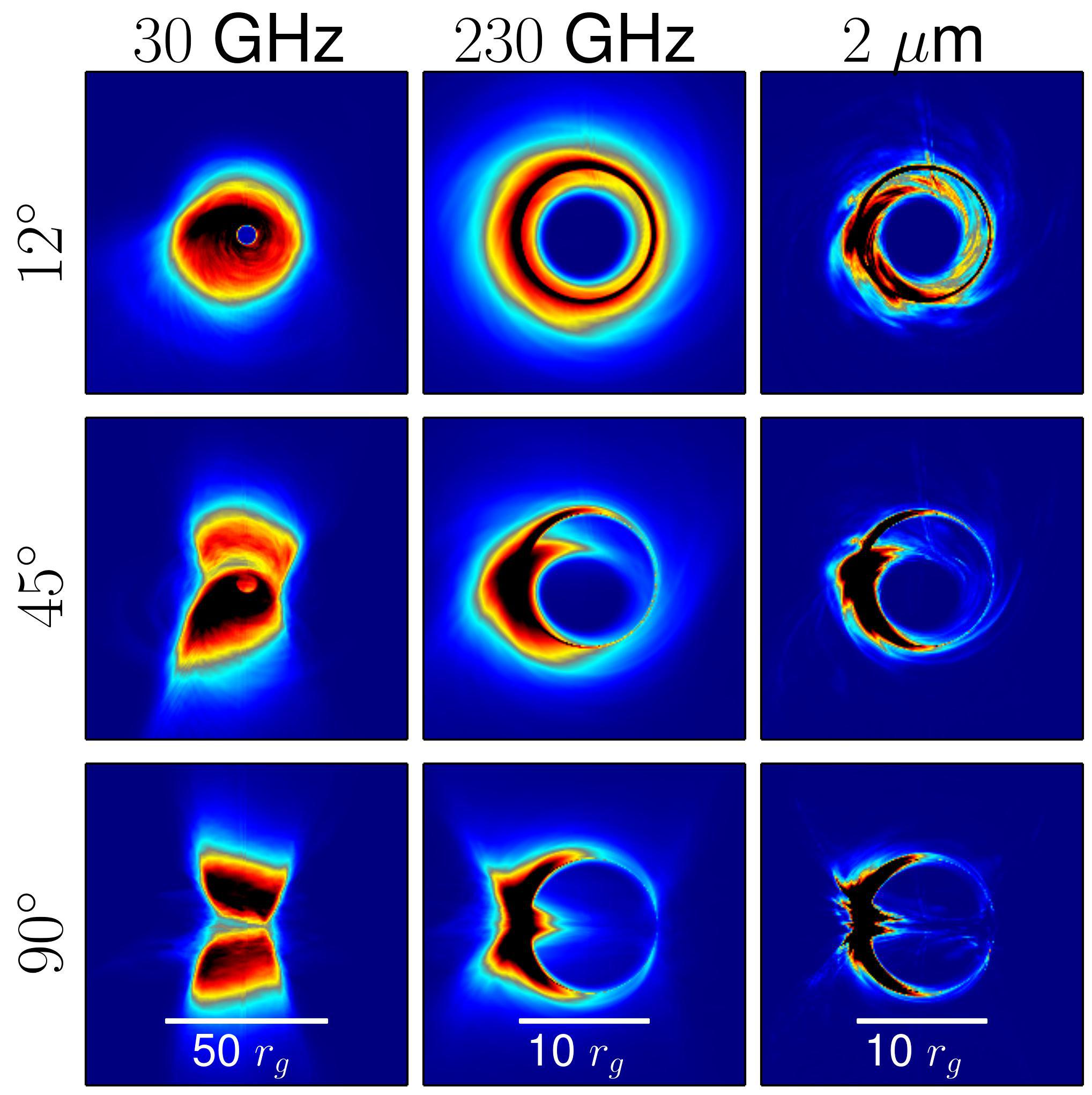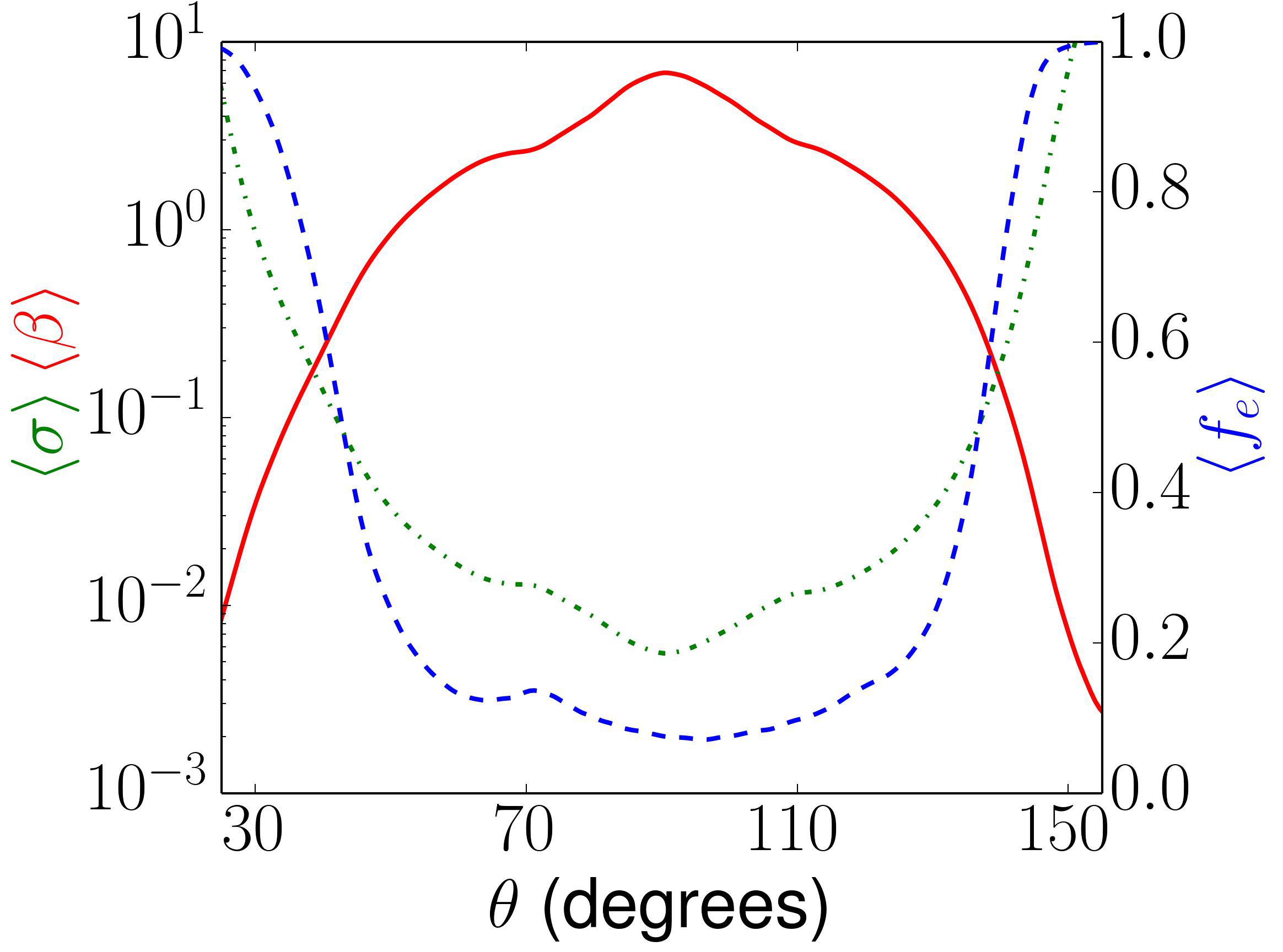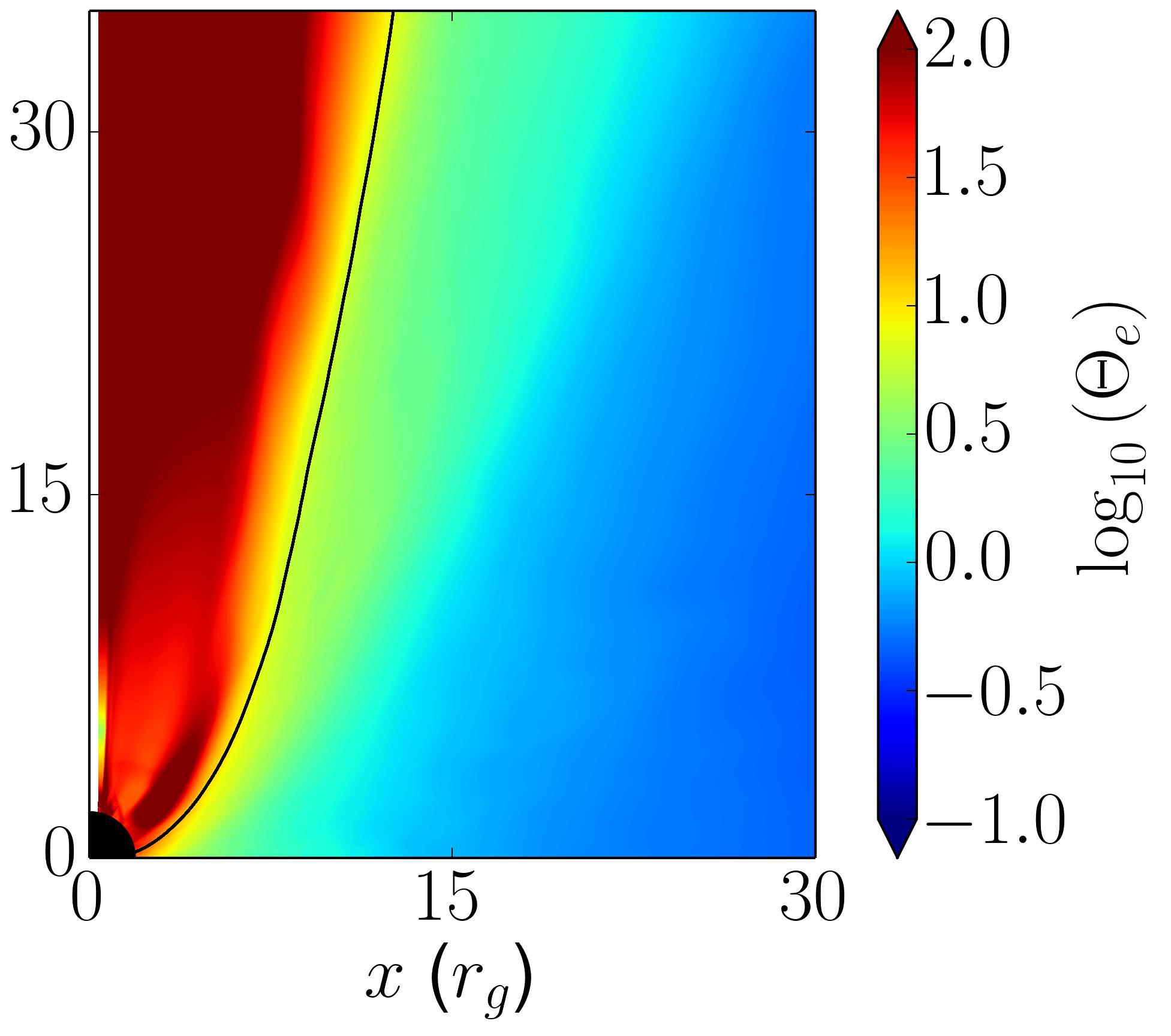The emission coincident with the two targets for horizon scale measurements of supermassive black holes, Sagittarius A* in our own galaxy and the supermassive black hole at the center of M87, is believed to be provided by either an accretion disk or the associated relativistic jet. To accurately model the observational signature of the regions closest to the event horizon, general relativistic magnetohydrodyanmic simulations (GRMHD) are required. However, since both sources are emitting well below the Eddington limit, they fall into a class of accretion systems known as radiatively inefficient accretion flows (RIAFs). The low density and high temperature in such systems imply that the Coulomb collision time is long and thus that collisionless plasma effects need to be considered. In particular, to accurately model the plasma it is needed to account for the two-temperature nature of the system. Previous work dealt with this problem by using phenomenological prescriptions to "paint" electron temperatures onto single-fluid GRMHD simulations. We, for the first time, sought to motivate some of these prescriptions by dynamically evolving the electron temperature in GRMHD simulations using a sub-grid model motivated by kinetic calculations of electron-ion heating in hot, magnetized plasmas.



